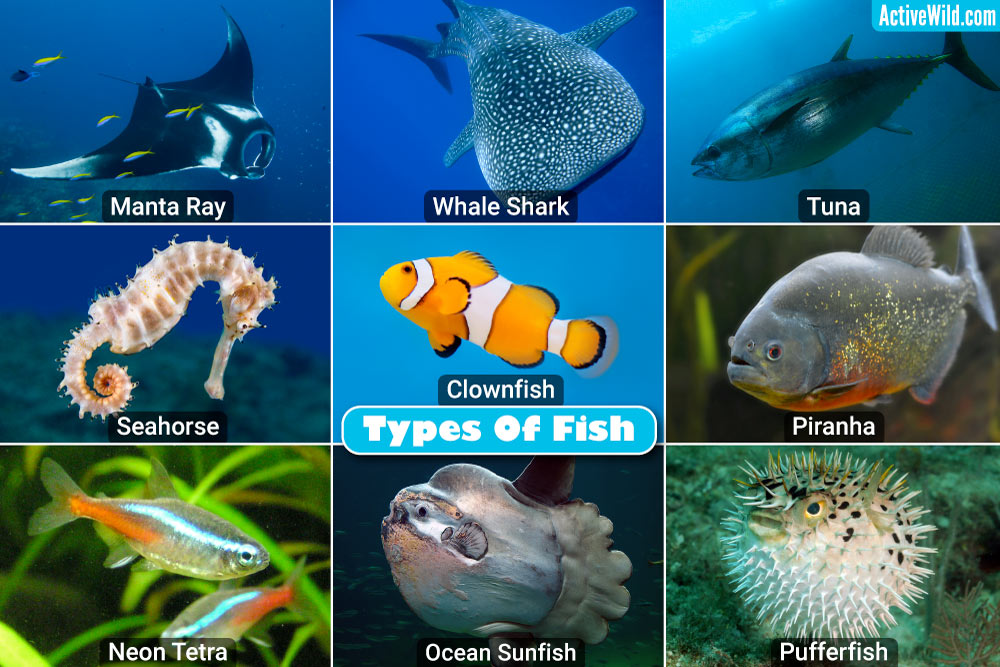There are around 34,800 fish species. All belong to one of three main types of fish: jawless fish, cartilaginous fish (sharks & rays) and bony fish (the largest group of fish). Fish are found as far north as the Arctic and as far south as Antarctica. Some fish breathe air, and some fish are found over 5 miles below the surface of the sea.
On this page you'll discover many amazing types of fish, including seahorses, sharks, eels, reef fish and many more...
Types Of Fish Page Index
How Many Different Types Of Fish Are There?
- Coelacanth
- Australian Lungfish / Queensland Lungfish
- American Eel
- Anglerfish
- Arctic Char
- Atlantic Cod
- Barracuda
- Common Carp
- Electric Eel
- Halibut
- Mahi-mahi
- Mariana Snailfish
- Mekong Giant Catfish
- Neon Tetra
- Northern Pike
- Ocean Sunfish
- Ocellaris Clownfish
- Piranha
- Pufferfish
- Sailfish
- Salmon
- Seahorse
- Tuna
- Yellow Perch
Introduction
Fish first appeared over 530 million years ago, during the Cambrian Period of the Paleozoic Era.
There were fish swimming in the world’s oceans hundreds of millions of years before the dinosaurs. This isn’t a surprise, as dinosaurs–and all other terrestrial (land-living) vertebrates (including humans)–evolved from fish!
Over the vast amount of time fish have lived on this planet, they have evolved to fill a wide variety of aquatic niches, and fish are by far the largest group of vertebrates.
Among the world’s fish are ocean predators such as sharks and barracudas; food fish such as cod and tuna, migratory species such as salmon and eels; freshwater species such as carp and pike; and deep sea fish such as the humpback anglerfish and Mariana snailfish.
On this page you’ll meet these and many other types of fish. You’ll discover the three main types of fish, and explore fish diversity with a list of interesting fish from all around the world.
How Many Different Types Of Fish Are There?
There are around 34,800 fish species; around half of all vertebrates are fish. There are almost six times more fish species than there are mammals, and around three times more fish species than there are reptiles.
Although the ocean accounts for around 97% of all of Earth’s water, the number of fish species found in saltwater, rather than in freshwater, habitats is proportionally smaller, with only between 60 and 50% of fish species being found in the ocean.
(In other words, despite under 3% of all available water being freshwater, up to 40% of fish species live in freshwater habitats!)
- Source for no. of species: https://www.fishbase.in/search.php
- Reptile species source: http://www.reptile-database.org/db-info/SpeciesStat.html
- Mammal source: https://www.catalogueoflife.org/
- Source ocean vs freshwater fish: https://researcharchive.calacademy.org/research/ichthyology/catalog/fishcatmain.asp
- Source for conservation status of all fish: IUCN Redlist
The Three Main Types Of Fish
There are three main types of fish: jawless fish, cartilaginous fish and bony fish. Below is information on each type of fish, and example species from each group.
Jawless Fish
Infraphylum: Agnatha
Superclass: Cyclostomi
Jawless fish were the first fish to appear, possibly having evolved from an ancient sea-squirt type animal that remained in its mobile larval form rather than becoming fixed to the seabed in adulthood.
There are two types of living jawless fish: hagfish and lampreys.
As their name suggests, jawless fish lack jaws, instead having circular, sucker-like mouths filled with hard, tooth-like structures made of keratin.
All living jawless fish are placed in the superclass Cyclostomi, but many scientists now think that lampreys may be more closely-related to jawed fish than they are to hagfish.
Examples Of Jawless Fish
Hagfish
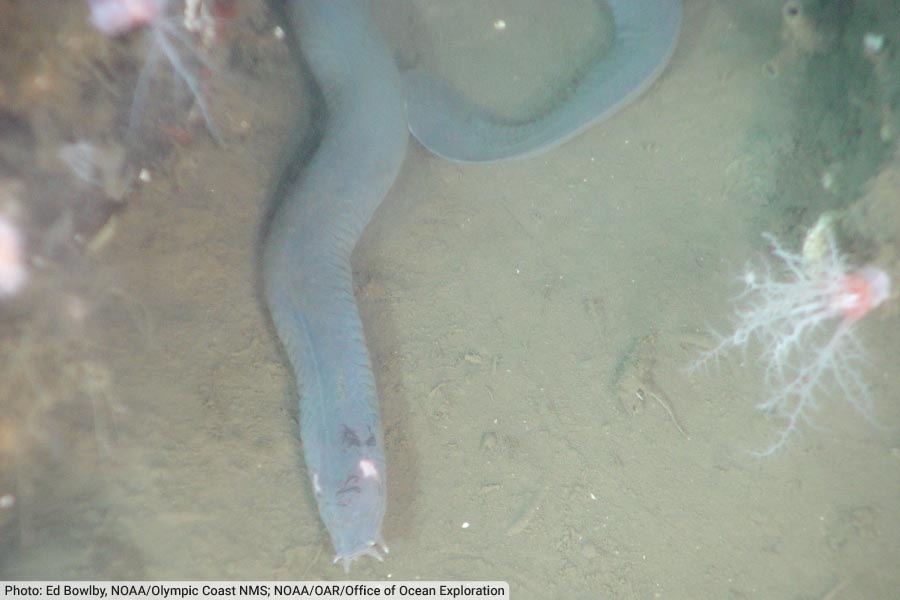

Class: Myxini
There are around 80 species of hagfish. Together they make up the class Myxini. Hagfish have long, eel-like bodies, and their mouths are surrounded by four pairs of tentacles. Running along the sides of their bodies are glands that produce large amounts of slime.
Hagfish are found in the sea, where they feed on living and dead sea animals. They range from 18 to 127 cm / 7.09 to 50 inches in length.
Lampreys


Order: Petromyzontiformes
Lampreys are fish in the order Petromyzontiformes. There are currently 47 recognized species of lamprey (source), ranging in size from 13 to 100 cm / 5.12 to 39.37 inches in length.
Lampreys are found in both marine and freshwater habitats. Some lampreys live in the sea, then migrate to freshwater habitats to breed. Depending on species, lampreys may either by carnivorous or herbivorous.
Several carnivorous lampreys are parasites, attaching themselves to other fish with their sucker-like mouths and teeth. They use their tongues to rasp away the scales of their victims and feed on the blood.
Cartilaginous Fish
Class: Chondrichthyes
The 1,282 or so species of cartilaginous fish make up the class Chondrichthyes.
Cartilaginous fish can be divided into two main types: Elasmobranchii, which includes the world’s sharks, rays, skates, and sawfish; and Holocephali, a group of deep sea fish which contains rat fish and elephant fish.
The skeletons of cartilaginous fish are made of a flexible, natural substance called cartilage (the same material out of which our ears and the tips of our noses are made).
You can find out more about sharks on the following pages:
Examples Of Cartilaginous Fish
Giant Freshwater Stingray
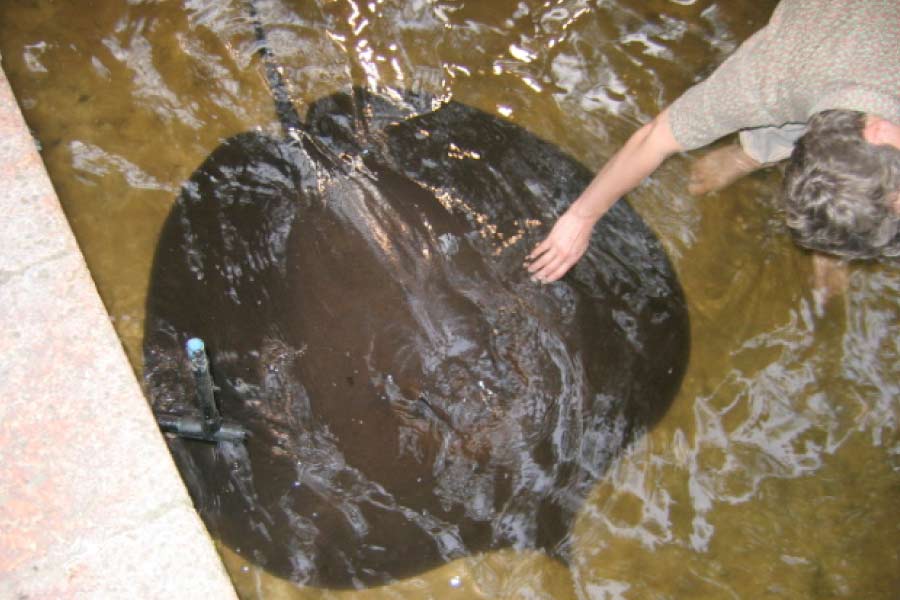

Scientific name: Urogymnus polylepis
Conservation status: Endangered
The giant freshwater stingray is the world’s largest freshwater fish, growing to lengths of up to 16.4 ft. / 5 m, and widths of up to 7.2 ft. / 2.2 m.
This giant freshwater fish is found in rivers and estuaries in Southeast Asia. It is one of around 220 species of stingray. Like other stingrays, its tail is equipped with a stinger that can inflict serious wounds on humans.
Giant Oceanic Manta Ray
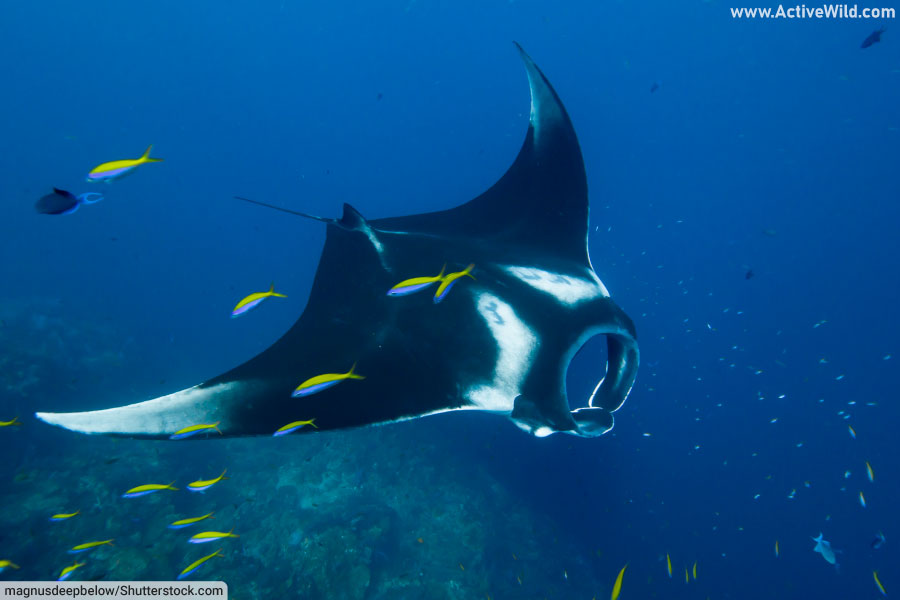

Scientific name: Mobula birostris
Conservation status: Endangered
The giant oceanic manta ray is the world’s largest species of ray. Particularly large individuals can be over 7m (23ft) in width and weigh around 3 metric tons (3,000kg / 6,614 lb).
The giant oceanic manta ray is one of two species of manta ray, the other being the reef manta ray (Mobula alfredi). It is found in tropical and temperate waters worldwide.
Like all rays, the giant oceanic manta ray propels itself through the water by flapping its wing-like pectoral fins.
Discover More With Active Wild
You can find out more about the giant oceanic manta ray on this page: Giant Oceanic Manta Ray Facts
Great Hammerhead Shark
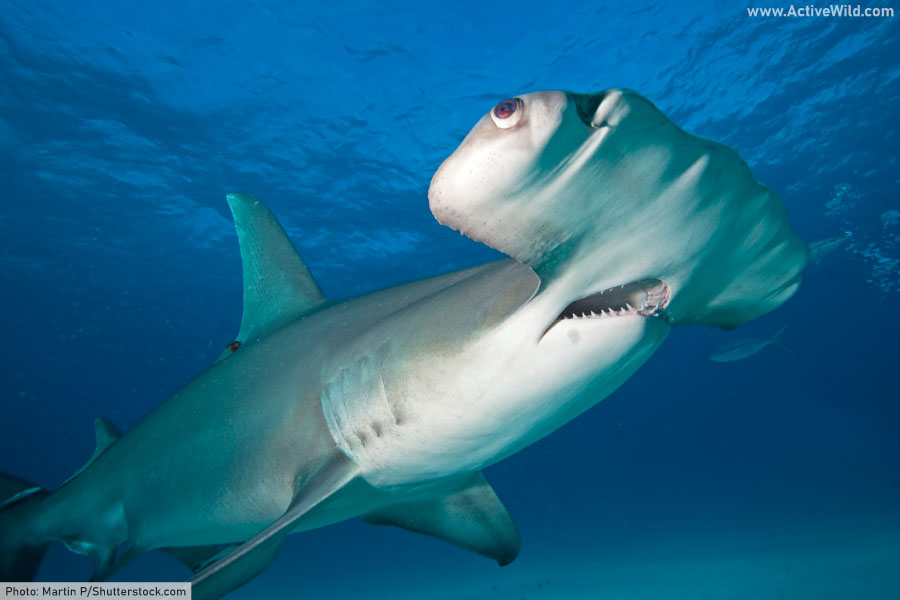

Scientific name: Sphyrna mokarran
Conservation status: Critically Endangered
The great hammerhead shark is the largest species of hammerhead shark.
Hammerhead sharks make up the family Sphyrnidae. The hammer-shaped head of a hammerhead shark is known as a cephalofoil. It is thought to improve the ability to judge distances.
Like all sharks, hammerhead sharks are able to sense the electrical fields produced by other fish. The cephalofoil may also help the shark’s electroreceptory abilities.
The great hammerhead shark is found in tropical waters worldwide. It is targeted by fisheries for its meat and fins, which are used in shark fin soup and in traditional Asian medicine.
Discover More With Active Wild
You can find out more about the great hammerhead shark on this page: Great Hammerhead Shark Facts
Discover more sharks on this page: Types of Sharks with Pictures & Facts
Great White Shark


Scientific name: Carcharodon carcharias
Conservation status: Vulnerable
The great white shark is one of the most best-known shark species due to its large size and appearance in the book (and film of the same name) “Jaws”.
Although the great white shark is responsible for more attacks on humans than any other shark, such attacks are rare and the species does not generally target humans.
The average length of a great white shark is around 14 ft. / 4.27 m, with females being slightly larger than males. Extremely large individuals may reach lengths of over 6m / 19.68 ft., although such sizes are rare.
Great white sharks are present in temperate and warm waters worldwide. They are usually found near the coast, but are known to migrate long distances and may be found in deeper waters.
Discover More With Active Wild
You can find out more about the great white shark on this page: Great White Shark Facts
Discover more sharks on this page: Types of Sharks with Pictures & Facts
Whale Shark
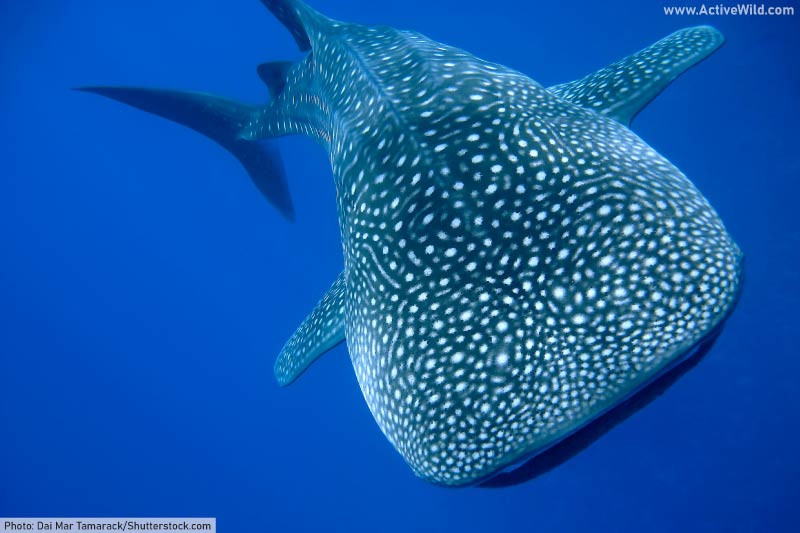

Scientific name: Rhincodon typus
Conservation status: Endangered
The whale shark is both the world’s largest shark, and the world’s largest fish! It grows to lengths of around 12 m / 40 ft, with some individuals exceeding 20 m / 65.62 ft.
Due to its huge size, the whale shark can be mistaken for a whale (whales are mammals, not fish). It is the largest animal that is not a cetacean. (Cetaceans are animals such as whales, dolphins and porpoises.)
Unlike most sharks, the whale shark is a filter feeder that feeds on plankton. The species is found in tropical and warm waters in most parts of the world.
Despite its endangered status and declining population, the whale shark is still hunted in China and other countries.
Discover More With Active Wild
You can find out more about the whale shark on this page: Whale Shark Facts
Bony Fish
- Superclass: Osteichthyes
Bony fish are fish whose skeletons are made of bone. Bony fish make up the superclass Osteichthyes. The vast majority of fish species belong to this group.
There are two main types of bony fish: lobe-finned fish (class Sarcopterygii), and ray-finned fish (class Actinopterygii).
There are just eight living species of lobe-finned fish. Fish in this group have fleshy fins that project from the body on stalks.
It is from lobe-finned fish that all terrestrial vertebrate animals (including humans) evolved. The lobed pectoral and pelvic fins eventually evolved into the limbs of amphibians, reptiles and mammals.
An estimated 99% of all fish are ray-finned fish. The fins of ray-finned fish consist of skin that is held up by bony spikes.
Most ray-finned fish (and therefore, most fish) belong to the infraclass Teleostei. The jaws of teleosts are able to protrude from the mouth, making foraging and capturing prey easier.
Examples Of Lobe-Finned Fish
Coelacanth


There are two species of coelacanth: the West Indian Ocean coelacanth Latimeria chalumnae, and the Indonesian coelacanth Latimeria menadoensis. The conservation status of the West Indian Ocean coelacanth is Critically Endangered; that of the Indonesian coelacanth is Vulnerable.
The coelacanth was at one time thought to have become extinct at the end of the Cretaceous Period around 66 million years ago. In 1938, a West Indian Ocean coelacanth specimen was discovered amongst the catch of a local fisherman in South Africa, thereby bringing the species “back from the dead”.
In 1997, the Indonesian coelacanth was discovered after zoologists saw a specimen on sale in a market.
Australian Lungfish / Queensland Lungfish
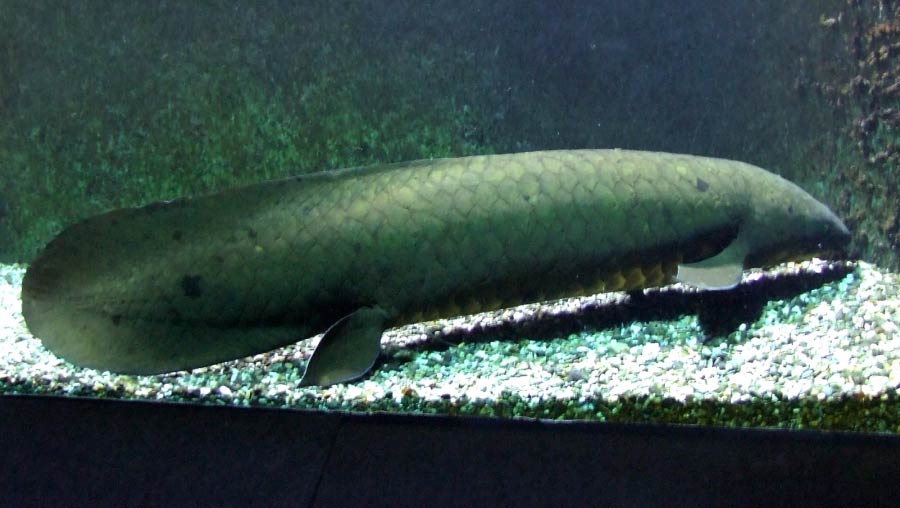

Scientific name: Neoceratodus forsteri
Conservation status: Endangered
The Australian lungfish is one of the six living lungfish species. Also known as the Queensland lungfish, the species is native to the Mary and Burnett rivers in Queensland, Australia. It grows to lengths of up to 4.92 ft / 1.5m.
As their name suggests, lungfish have lungs and breathe air, unlike nearly all other types of fish.
The Australian lungfish is the only lungfish that can survive using its gills alone; the other species are entirely reliant on their lungs.
Discover More With Active Wild
You can see more Australian animals on this page: Australian Animals List with Pictures & Facts
Examples Of Ray-Finned Fish
American Eel


Scientific name: Anguilla rostrata
Conservation status: Endangered
Despite their snake-like elongated bodies, eels are fish that are equipped with gills and fins. Eels are fish in the order Anguilliformes. There are around 200 eel species, most of which are found in the ocean.
The American eel belongs to the “freshwater eel” family, Anguillidae, and is the only freshwater eel found in North America. Like other members of this family, it spends most of its life in freshwater before returning to the ocean to breed.
The species lives in freshwater habitats in the eastern United States and Canada.
Both the American and the European eel breed in the Sargasso Sea, part of the Atlantic Ocean in which large amounts of Sargassum seaweed float.
Anglerfish
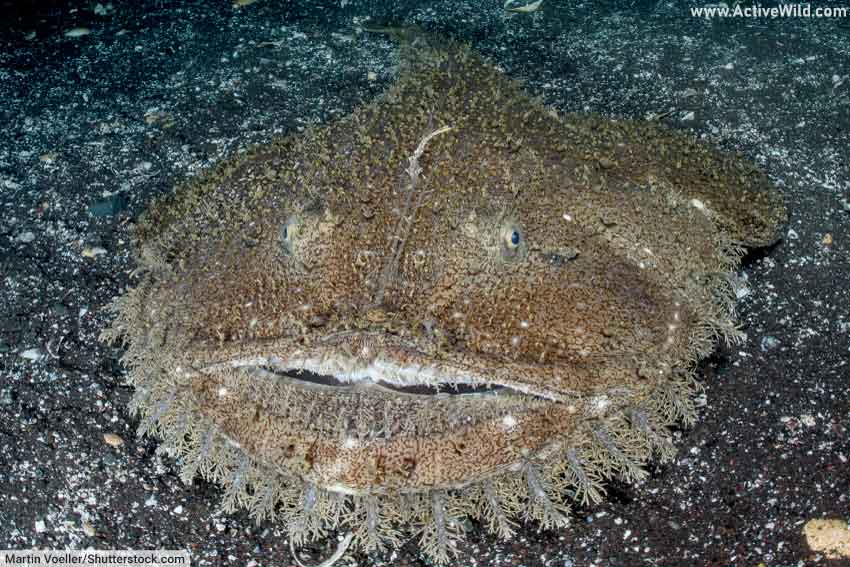

Order: Lophiiformes
The 350-plus species of anglerfish together make up the order Lophiiformes. These predatory fish are found in oceans worldwide, and, depending on species, live in both deep-sea and shallow-water habitats.
Anglerfish get their name from the unique way in which they catch their prey, which resembles a human angling for fish.
A specially-adapted fin, at the tip of which is a fleshy ball known as an “esca”, projects forwards over the anglerfish’s head. This fin is moved temptingly in order to lure fish within snapping distance of the anglerfish’s fearsome jaws.
Some anglerfish are deep sea fish, found at depths where no light penetrates. One such species is the humpback anglerfish, Melanocetus johnsonii, which is found at depths of up to 1.5 km / 0.93 miles.
Arctic Char
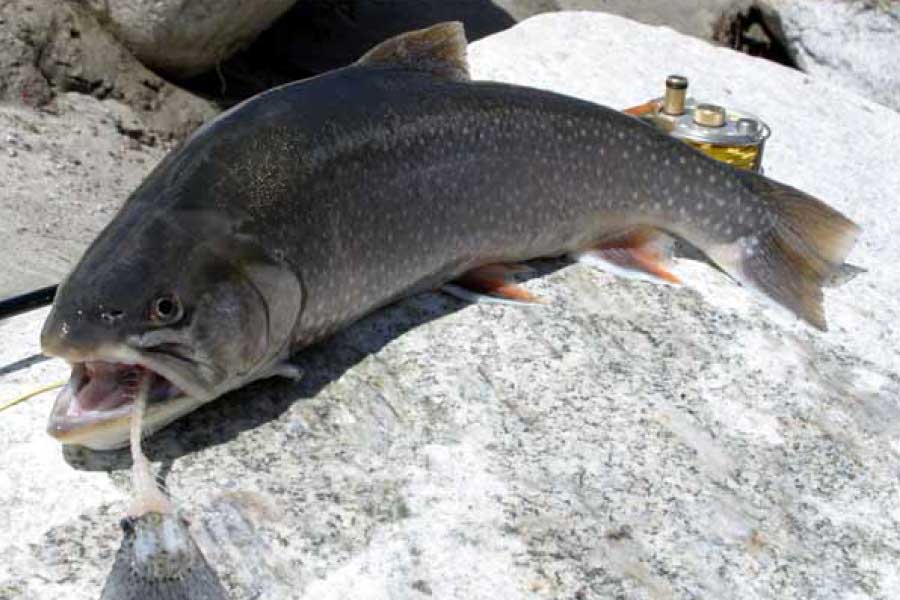

Scientific name: Salvelinus alpinus
Conservation status: Least Concern
The Arctic char is a fish in the salmon and trout family, Salmonidae. It inhabits cold, freshwater habitats in Arctic and sub-Arctic regions, and is the freshwater fish found the furthest north.
Some Arctic char populations are land-locked, while others live in the ocean and migrate to freshwater habitats to spawn. Unlike many salmon species, which die after spawning, Arctic char often survive and spawn several times during their lives.
Discover More With Active Wild
You can see more Arctic animals on this page: Arctic Animals List with Pictures & Facts
Atlantic Cod
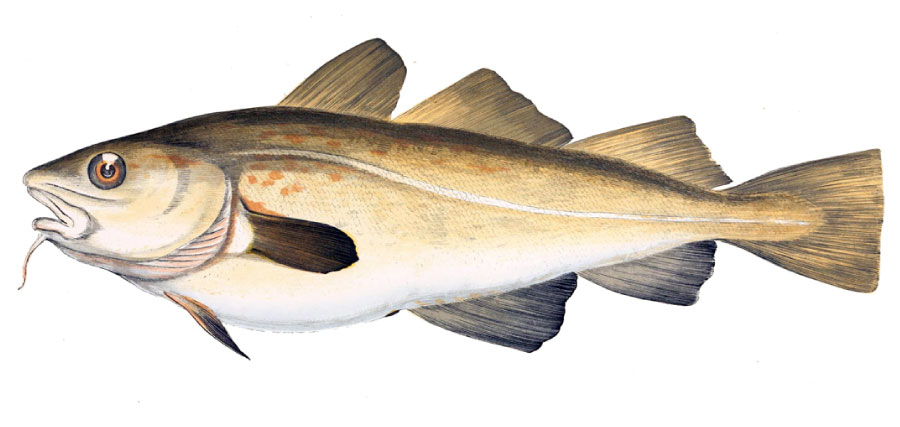

Scientific name: Gadus morhua
Conservation status: Vulnerable
The Atlantic cod is one of several cod species of genus Gadus, which also contains the Alaska pollock. It is one of two common cod species, the other being the Pacific cod Gadus macrocephalus.
A popular food fish, the Atlantic cod has been hunted for hundreds of years. Advances in technology such as motor-powered boats, the ability to freeze catches and sonar to locate fish, allowed vast quantities of Atlantic cod to be caught.
Overfishing caused the population of Atlantic cod to plummet; in 1992, the population was just 1% of its historical level.
Barracuda
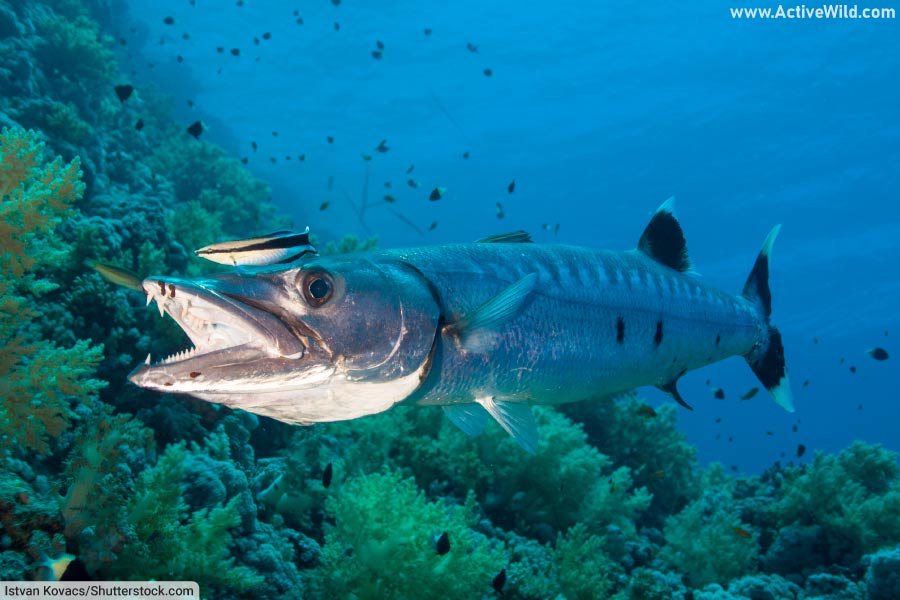

Barracudas are predatory salt water fish with long, powerful bodies and large jaws. There are 27 species of barracuda, all are in the genus Sphyraena.
Larger species can grow to over 1.5 m (5 ft.) in length, and some can swim at speeds of up to 35 mph (56 km/h).
Common Carp
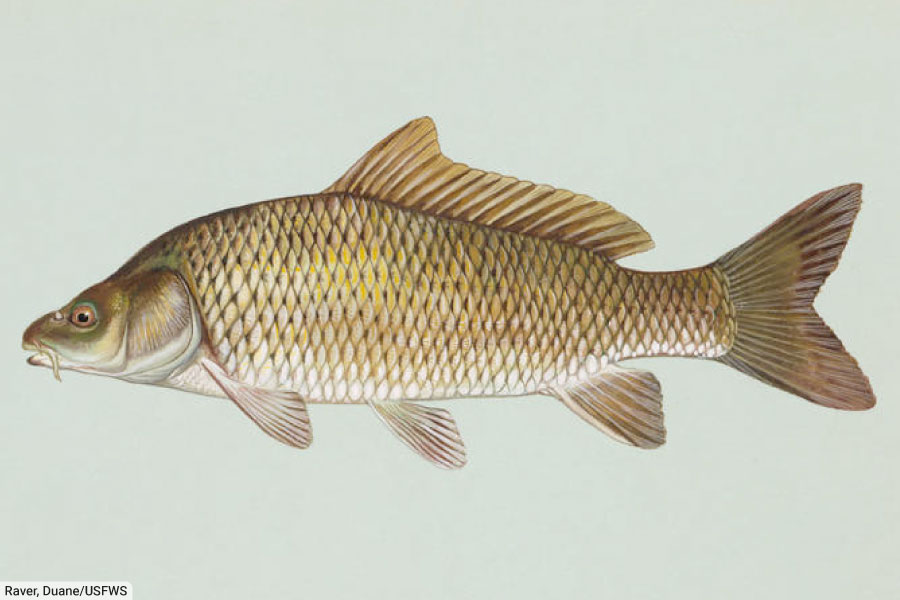

Scientific name: Cyprinus carpio
Conservation status: Vulnerable
The common carp is a large member of the carp family, Cyprinidae. This group of freshwater fish is home not only to carp, but also to minnows, barbels and goldfish. Containing around 3,000 species, Cyprinidae is the largest freshwater fish family.
Also known as the Eurasian carp, the common carp is native to rivers and lakes in Eurasia, and has also been introduced to the Americas, Africa and Australia. The species is regarded as an invasive species in several areas, as it can outcompete native species.
The common carp has been a popular food fish for hundreds of years, and is also pursued by anglers die to its strength and size.
Electric Eel
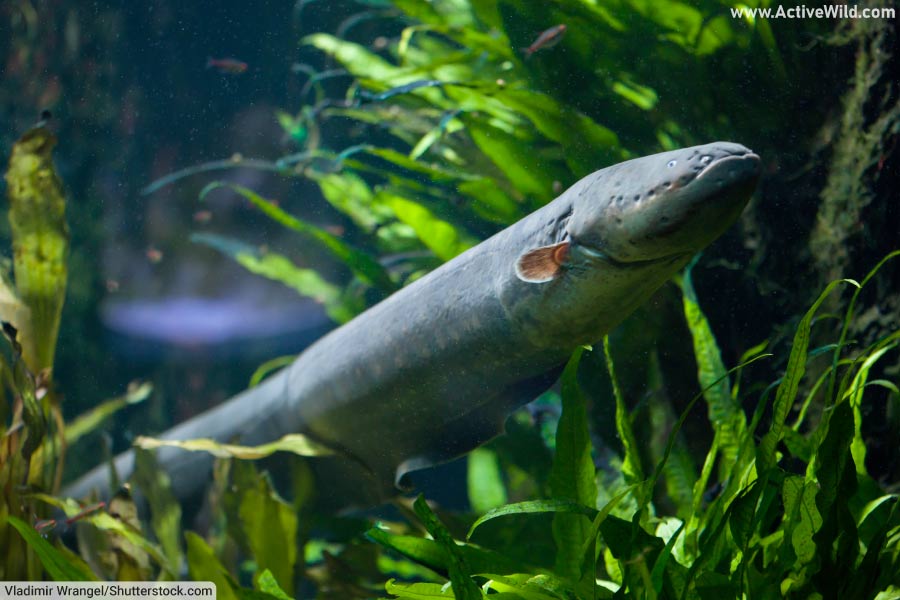

Scientific name: Electrophorus electricus
Conservation status: Least Concern
The electric eel is a species of fish famous for its ability to create a strong (and potentially dangerous) electrical charge.
The electric eel is native to South America, where it inhabits freshwater rivers and swamps. It grows to around 2 m / 6.56 ft. in length.
Despite its name, the electric eel is a knifefish of order Gymnotiformes rather than a true eel of order Anguilliformes.
The electrical charge produced by the electric eel is strong enough to be used both for capturing prey and as a means of self-defense.
Although an electric shock from an electric eel is extremely painful, it is rarely fatal.
Discover More With Active Wild
You can find out more about the electric eel on this page: Electric Eel Facts
Discover more rainforest animals on this page: Rainforest Animals List with Pictures & Facts
Halibut


There are three species of halibut: the Atlantic, Pacific and Greenland halibut. All are large flatfish belonging to the family Pleuronectidae.
Members of this family are also known as “righteye flounders”, due to both of their eyes being on the right side of their bodies. (Members of the fish family Bothidae are known as “lefteye flounders”, because their eyes are located on the left side of their bodies.
Juvenile flounders have an eye on either side of their heads. As they mature and their bodies flatten, one of the eyes migrates to the upper side of the fish’s body.
The Atlantic halibut is the world’s largest flatfish. Found in the North Atlantic, it grows to lengths of up to 15.42 ft. / 4.7 m, and weighs of up to 710 lb / 320 kg.
Mahi-Mahi


Scientific name: Coryphaena hippurus
Conservation status: Least Concern
The mahi-mahi is a sleek, surface-dwelling fish found in tropical and subtropical waters worldwide. The species is also known as the “common dolphinfish”. It lives in schools and is highly migratory.
Growing to around 4.6 ft. / 1.4 m in length, the mahi-mahi has a distinctive blunt head, a forked tail and is brilliantly colored, having bright yellow sides and blue-green back. When caught, the fish’s colors fade to gray.
Due to its strength and speed, the mahi-mahi is highly sought after as a game fish.
Mariana Snailfish
(No image available)
Scientific name: Pseudoliparis swirei
Conservation status: Unassessed
Few fish live deeper than the Mariana snailfish. This tadpole-shaped fish inhabits the Mariana Trench – the world’s deepest oceanic trench. Mariana snailfish specimens have been captured at depths of up to 4.95 miles / 7.97 km.
Like all snailfish, the Mariana snailfish has a bulbous body and a thin, tapering tail. Its pectoral fins (side fins) provide propulsion through the water. It is a bottom-dwelling species, and probably the apex predator of its habitat. It is thought to feed on small crustaceans.
Other fish found at similar (or even greater) depths include Abyssobrotula galatheae, a type of cusk eel, and the ethereal snailfish, a fish that has only been photographed and is yet to be officially named as a species.
Discover More With Active Wild
You can find out more about the Mariana Trench on this page: Mariana Trench Facts
Mekong Giant Catfish


Scientific name: Pangasianodon gigas
Conservation status: Critically Endangered
The Mekong giant catfish is one of the world’s largest freshwater fish. It is found in Asia’s Mekong River.
Asia’s third-longest river, the Mekong flows over 3,050 miles / 4,909 km and passes though or borders several countries, including China, Thailand and Vietnam.
The Mekong giant catfish was once found throughout much of the Mekong’s length. Today, due to overfishing and habitat degradation, the species is critically endangered.
The Mekong giant catfish reaches lengths of up to 9.84 ft. / 3 m, and weights of up to 772 lb / 350 kg.
Catfish, which are named after the whisker-like barbels that surround the mouths of many species, make up the order Siluriformes.
Neon Tetra


Scientific name: Mariana Snailfish
Conservation status: Unassessed
The neon tetra is best-known as an aquarium fish, and the species is kept as a pet in homes all around the world. This small, brightly-colored freshwater fish is native to rivers and streams in the Amazon basin in South America.
The neon tetra’s body is largely translucent, with bright blue and red stripes.
Despite being native to South America, most neon tetras destined home aquariums are bred in farms in Southeast Asia.
Northern Pike
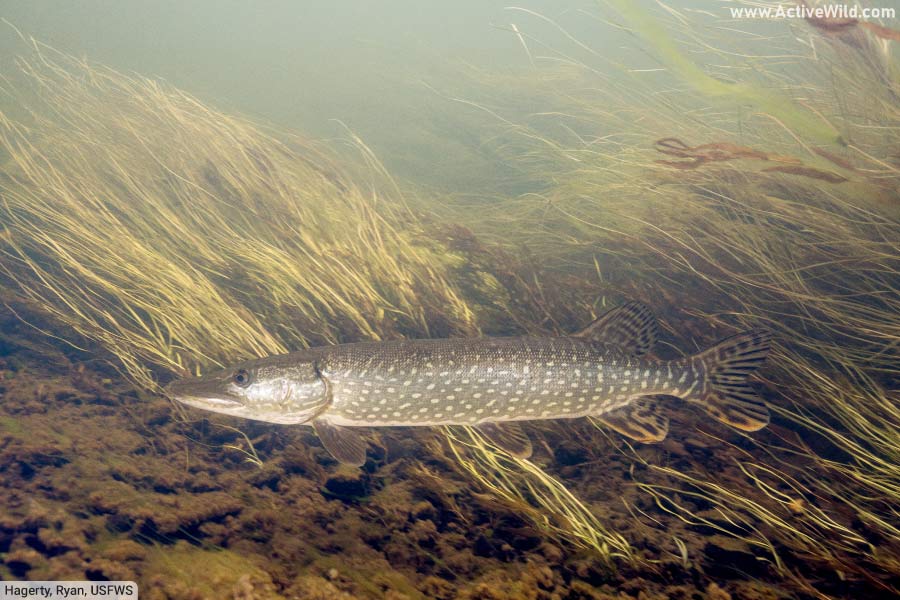

Scientific name: Esox lucius
Conservation status: Least Concern
The northern pike, known simply as the pike in Britain and North America, is a large, predatory freshwater fish found in rivers, lakes and streams across much of the Northern Hemisphere.
The pike has a powerful, torpedo shaped body and a large mouth full of sharp teeth. Its olive-green body and pale green markings provide camouflage.
An ambush predator, the pike lies in wait for suitable prey to approach before launching a powerful, high speed attack, securing its victim in its backward-pointing teeth.
The pike is known for its aggression, and if food is short, will turn to cannibalism.
Ocean Sunfish
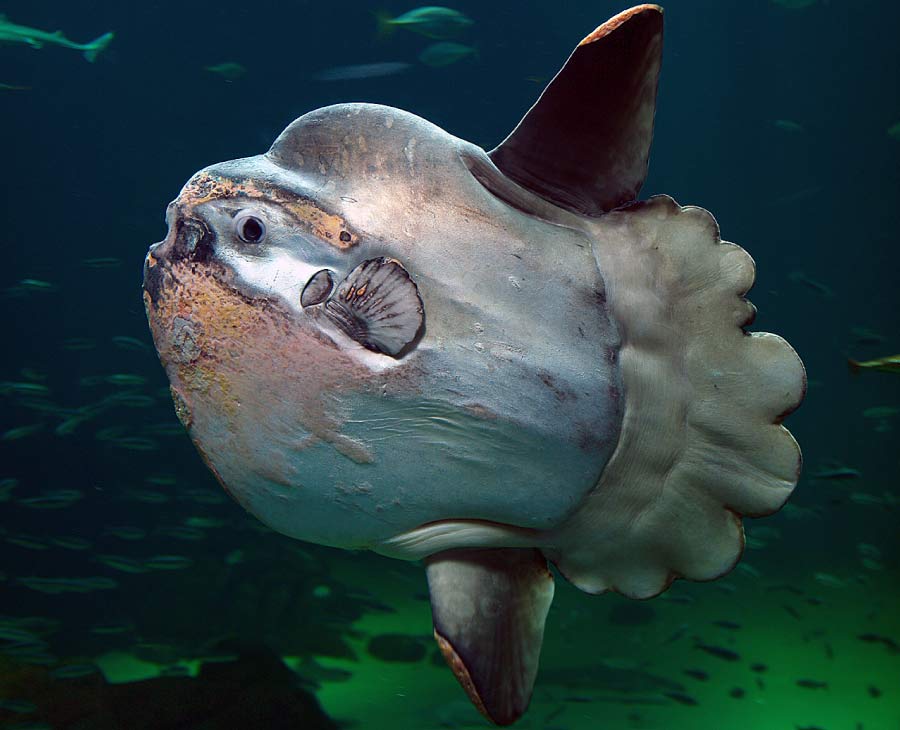

Scientific name: Mola mola
Conservation status: Vulnerable
The ocean sunfish and closely-related southern sunfish are the two heaviest bony fish, weighing up to 2,300 kg / 5,070 lb. Their flat, circular bodies can reach lengths of up to 3.3 m / 10.83 ft.
Found in tropical and temperate oceans worldwide, the ocean sunfish is a predator that preys on a variety of ocean animals, including small fish, squid, mollusks, crustaceans, brittle stars and jellyfish.
The female ocean sunfish produces up to 300 million eggs at a time; more than any other vertebrate.
Ocellaris Clownfish


Scientific name: Amphiprion ocellaris
Conservation status: Unassessed
Famous for being the star of the film “Finding Nemo”, the ocellaris clownfish is a member of the clownfish and damselfish family, Pomacentridae.
Clownfish are also known as anemonefish due to the symbiotic relationship they have with anemones. (A symbiotic relationship is a close relationship between two different species.)
In return for guarding the anemone from predators and parasites, the fish is itself protected by the anemone’s stinging tentacles, which have no effect on the fish.
Discover More With Active Wild
You can find out more about the ocellaris clownfish on this page: Ocellaris Clownfish Facts
Piranha
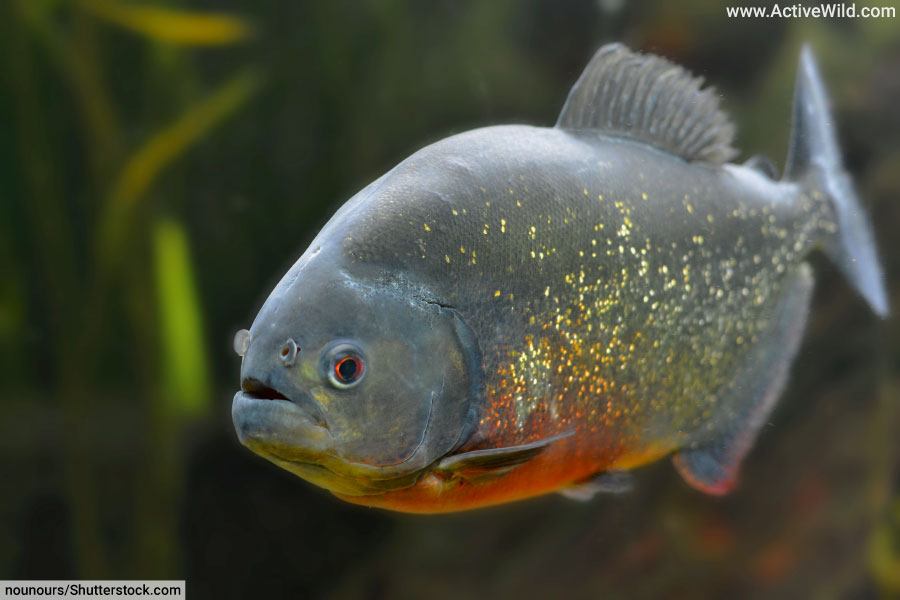

Piranhas are freshwater fish found in rivers and lakes in South America. There are several piranha species, ranging in length from 5 to 20 inches / 12 to 50 cm. The largest piranha species is the red-bellied piranha.
Piranhas are squat, powerful fish, armed with a mouthful of sharp teeth. The bite force of the redeye, or black, piranha is one of the largest, relative to size, of all animals.
Piranhas are omnivores, eating plants as well as a variety of small to medium-sized animals, including fish, worms, and even mammals and birds.
The piranha’s fearsome reputation is not quite deserved; although piranhas do occasionally enter feeding frenzies while consuming a large prey animal, they are not apex predators and are just as likely to be prey to larger predators.
Discover More With Active Wild
You can find out more about piranhas on this page: Piranha Facts
Pufferfish
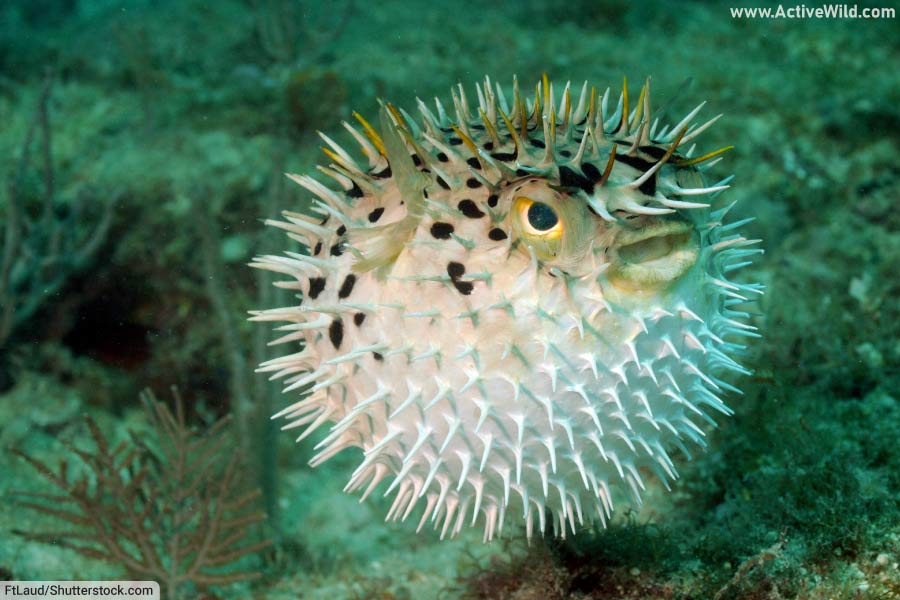

Family: Tetraodontidae
Pufferfish are a family of around 200 species, most of which are found in tropical marine habitats.
Pufferfish are named for their ability to inflate their stomachs with water if threatened. This both increases the perceived size of the pufferfish, and exposes the numerous spines that usually lie flat against the fish’s skin.
As an additional defense against predators, many pufferfish species are poisonous. Certain pufferfish are among the world’s most poisonous animals, and can be lethal to humans if consumed. Despite this, even highly-toxic species are eaten as a delicacy in Japan and other countries (specialist chefs remove the toxic organs before the fish is served).
Sailfish
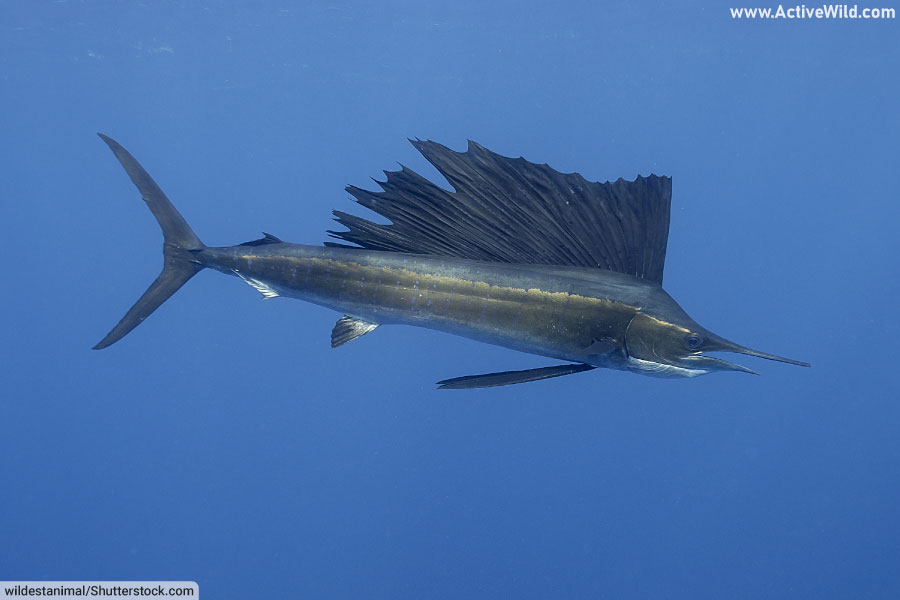

Scientific name: Istiophorus platypterus
Conservation status: Least Concern
The sailfish is one of the world’s fastest fish, capable of swimming at reported speeds of up to 109.19 km/h / 67.85 mph. Its bill is long and sharp, and used to injure prey fish, making them easier to catch. The sailfish’s “sail” is an enlarged dorsal (back) fin that is raised when the sailfish attacks its prey.
The sailfish belongs to the marlin family, Istiophoridae, which also contains the Atlantic blue marlin and the black marlin. Some scientists split the sailfish into two species: the Atlantic sailfish and the Indo-Pacific sailfish.
Salmon
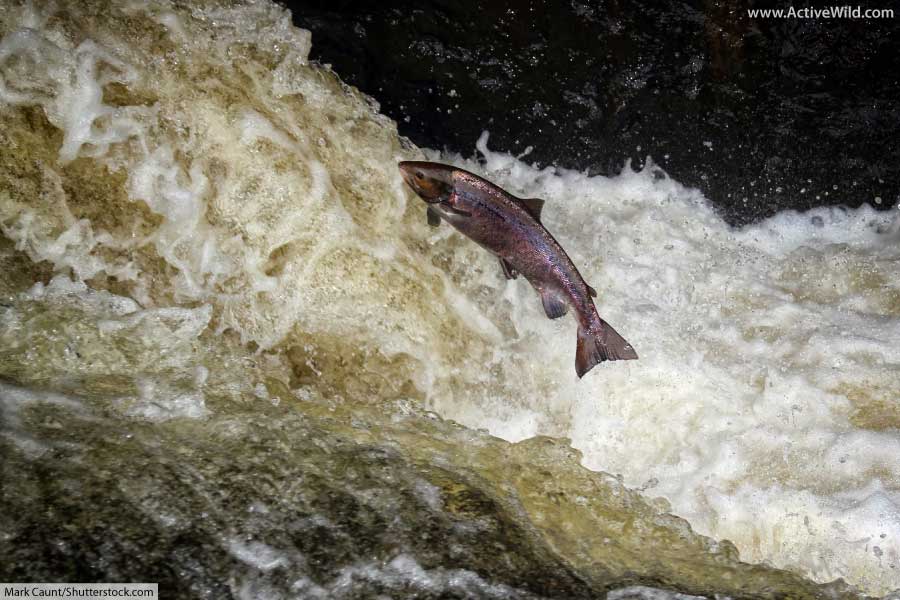

Family: Salmonidae
Of the nine main salmon species, eight are “Pacific salmon”, which spend their adult lives in the Pacific Ocean. The ninth is the Atlantic salmon, which, as its name suggests, is found in the Atlantic.
All salmon belong to the salmon family, Salmonidae, which is also home to trout (including rainbow trout and brown trout), char and grayling.
Most salmon are migratory, hatching from eggs in freshwater, then living most of their lives in the ocean. Some salmon are landlocked, living their entire lives in freshwater.
After one to five years at sea, salmon migrate back into freshwater (often to the very rivers in which they originally hatched), where they spawn.
After spawning, all Pacific salmon die, but the Atlantic salmon often survives and returns to the ocean, and will return to freshwater to spawn at least one more time.
Discover More With Active Wild
You can see more animals that migrate on this page: Animals That Migrate
Seahorse
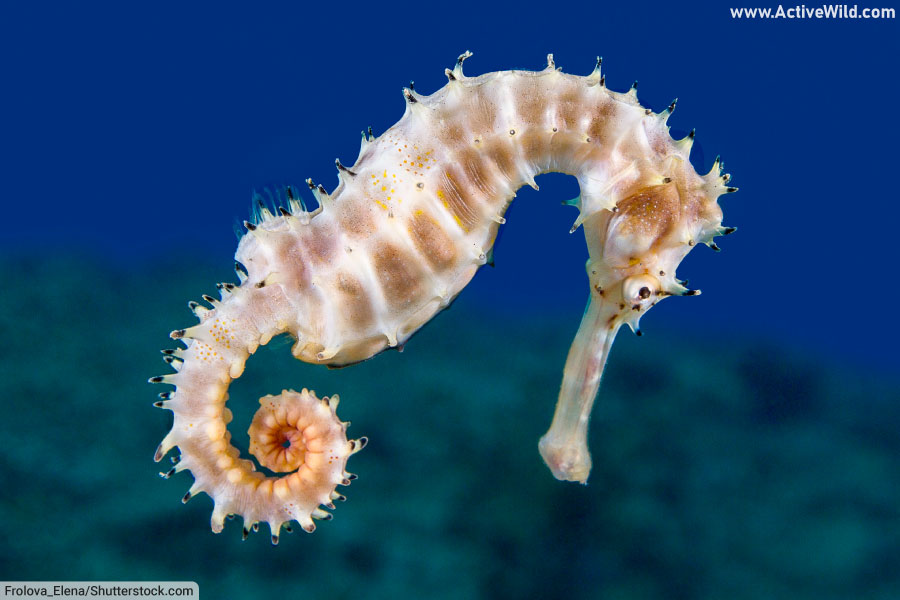

Family: Syngnathidae
Genus: Hippocampus
It is a surprise to many that the seahorse is a type of fish, rather than a miniature ocean mammal! Seahorses are fish of genus Hippocampus, which is a mixture of the Greek words for “horse” and “sea monster”.
The Catalogue of Life (an online species database) currently lists 55 species of seahorse. (Source)
Seahorses are so-named due to their resemblance to the land animals of the same name. They are found in shallow ocean waters in tropical and temperate regions all around the world.
Poor swimmers, seahorses are usually found with their tails curled around plants or other objects to prevent them from being washed away with the current.
The dwarf seahorse Hippocampus zosterae is recognized by the Guinness Book of Records as the world’s slowest-moving fish! (Source)
Discover More With Active Wild
You can find out more about seahorses on this page: Seahorse Facts
Tuna


Family: Scombridae
The fifteen species of tuna belong to the mackerel family, Scombridae, which is home to tuna, mackerel and bonito. Of these, eight belong to the genus Thunnus, a group known as the “true tunas”.
"True tunas" include the albacore, bigeye, Atlantic bluefin, Pacific bluefin, and yellowfin tuna.
Unlike nearly all other fish, tuna are warm-blooded; their bodies maintain a temperature higher than that of the surrounding water. (Other warm-blooded fish include opahs (large, round-bodied sea fish) and two families of mackerel sharks.)
Tuna are active predators, and among the fastest-swimming of all fish. Like other fast-swimming, predatory fish, tuna have a "lunate" (shaped like a crescent moon) tail fin.
Popular food fish, tuna are caught in vast amounts in many parts of the world. Overfishing has led to the southern bluefin tuna becoming an endangered species.
Yellow Perch


Scientific name: Perca flavescens
Conservation status: Least Concern
The yellow perch is a freshwater fish found in the United States and Canada. It is yellow-green in color, with darker green stripes, and red patches on its pectoral (side) fins and around its mouth. Its two dorsal fins are spiny.
A predator, the yellow perch feeds on a range of small animals, including insects, fish eggs, crustaceans and fish (including other yellow perch).
The yellow perch is an important part of the food chain in North American freshwater habitats, being both a predator and an important source of food for larger fish such as walleye and largemouth bass.
The yellow perch is closely related to the European perch, and the two are able to breed. The yellow perch is considered by some to be a subspecies of European perch.
Related Pages
Find out more about animals on the following pages:
Fish - The Ultimate Guide - Become A Fish Expert!
Weird Fish - Meet The World's Strangest Fish, With Pictures & Facts
Ocean Animals List with Pictures & Facts
List of Sharks with Pictures & Facts
List of Reptiles with Pictures & Facts
List of Amphibians with Pictures & Facts

